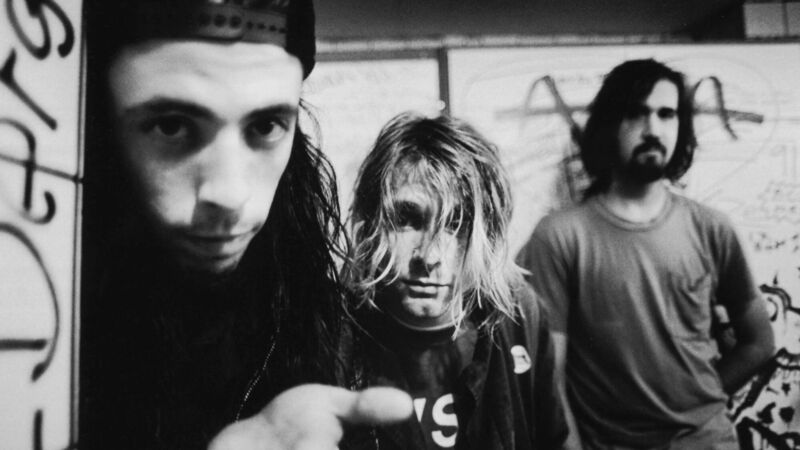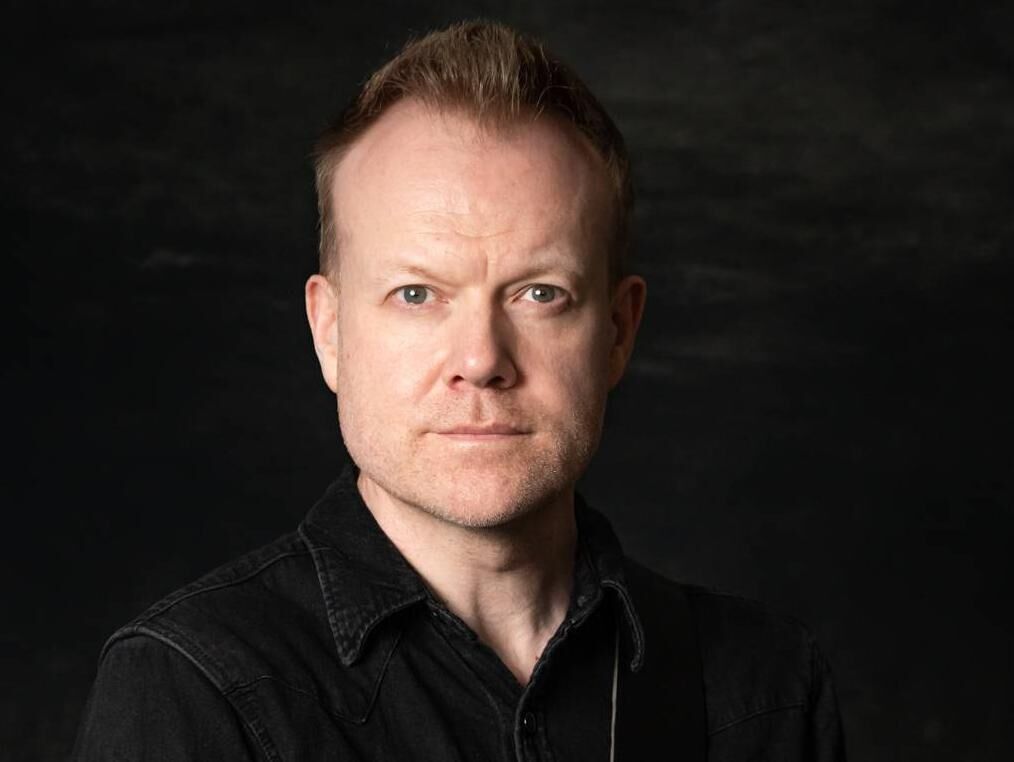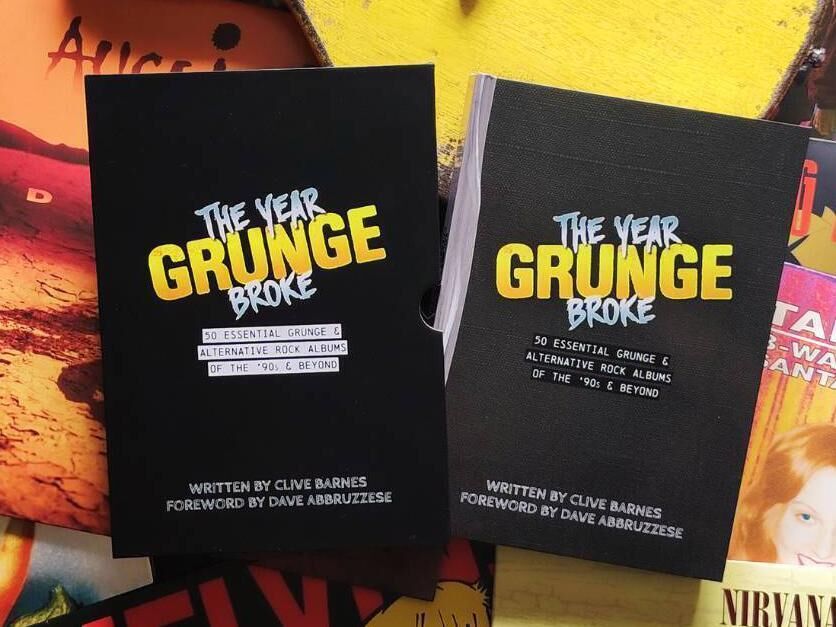The Year Grunge Broke: Irish author digs into the history of Nirvana and the rest of the genre

Nirvana were the best-known band in the grunge scene. (Photo by Paul Bergen/Redferns)
In September 1991, Dublin teenager Clive Barnes had what he calls his ‘JFK moment’. He was sitting in bed eating a packet of Taytos watching TV. “Next thing you know, this song came on a late night music show… and it was And I’ll never forget the moment,” he says. “I thought – I’ve been striving to hear something like this… and here it is. And I wasn’t alone in thinking that. It was just amazing.”
The Washington-based act behind the song was, of course, Nirvana, the defining band of the grunge era. Now Barnes has written a book called It features albums from well-known bands like Pearl Jam and Soundgarden, as well as lesser-known acts like Truly and Brad.
Through the stories of these records, the book charts the rise and fall of grunge, showing how it catapulted alternative bands from tiny venues to stadiums. Though grunge bands had been around for some time (the term grunge became popular in the late 1980s), the title refers to 1991, when the release of - from Nirvana’s second album, - pushed grunge mainstream.
Of course, a handful of Irish music fans got an early taste of it all when Nirvana played the future hit for the first time outside the US as part of their support slot to Sonic Youth in August 1991 in Sir Henrys in Cork, and the Top Hat in Dun Laoghaire.
But the book also shows grunge’s dark sides, such as the drug addiction which affected many prominent musicians, and how acts had to wrestle with fame and wondering if they had ‘sold out’. Cobain’s own troubles were played out in view of the public, and his shocking death in 1994 from a self-inflicted gunshot wound changed grunge - and perhaps music - forever.

has its roots in a 1990s cover band which Barnes set up in 2016. To celebrate the book’s release, the band has embarked on a tour which includes a gig on November 14 at Sea Church in Ballycotton. The pandemic meant that Barnes, a musician, “lost absolutely everything”. So he began sharing his thoughts on grunge acts on social media under The Year That Grunge Broke name. His posts quickly went viral, and he now has over 650,000 followers on Facebook and over 16,000 on Instagram.
He dedicated so much time to researching and writing about grunge albums that after four years he realised if he compiled them together he’d have a book. The first publisher he approached - A Way With Media - snapped up the idea.
Part of the appeal of is how indelible teenage fandom is. “I was a teenager when Nirvana hit…I think when you’re that age, from about 12 to about 18 or 20, whatever music you’re listening to at that time will always stay with you,” says Barnes. “Grunge resonated massively over here [in Ireland]. It was just huge.”
What’s important too was grunge hit right before the internet age. “There’s something incredibly authentic about the early 90s,” says Barnes, explaining that pre-internet, music scenes formed in specific ways in different towns and cities. Today, music scenes and their related subcultures tend to be more dispersed. The Year That Grunge Broke gigs attract older adults and young people eager to reconnect with that era. “Those kids just love how visceral and real the whole thing is. It’s not in any way fake,” he says.
Barnes hadn't made Nirvana's first Irish gigs in 1991, but he and his brother had tickets for the band's scheduled show at the Point Depot on April 8, 1994. That date ended up being days after Cobain took his own life (the tour had already been postponed after Cobain overdosed while on tour in Rome).
Barnes did see Soundgarden live at Reading Festival in August 1994 aged 17, and Alice in Chains at the Point Depot (opening for Megadeath) aged 14 in April 1991. “I had never seen anything as cool as that band,” he says of Alice in Chains.
Why did teenagers like him connect to grunge so deeply? “Before then it was stuff that you couldn’t relate to. Then you have a guy like Kurt Cobain coming along, a guy like Eddie Vedder, writing proper lyrics, lyrics that mean things, phrases that actually meant something to you,” says Barnes. “And then it was linked to this music that didn’t sound like what you had previously heard - it sounded deeper. There was more to it. There was an anger… that movement mixed punk, it mixed classic rock, it mixed Black Sabbath, it mixed everything that was good about rock music beforehand and put it into this really powerful package.”

opens with Alice in Chains’ album and then presents new albums for each month, each from a different year. Some bands have multiple records - three of Nirvana’s are there - while compilations like the Singles soundtrack are included because they catalogued the scene. But it’s not just the big guns who are present.
“I wanted to put in albums by bands that I think deserved a far better shake and never got it. Because those albums stand shoulder to shoulder with any of the any of the There’s bands like Paw, Dragline. I hope people who read the book will find these albums and realise, ‘God, how did I miss this?’,” says Barnes.
There’s also the Irish band Kerbdog, whose frontman Cormac Battle will help launch the book on November 19 in Whelan’s, Dublin.
For all of its highs, grunge had plenty of lows. That includes the deaths of many prominent frontmen over the years: as well as Cobain’s death, Layne Staley from Alice in Chains died from a drug overdose in 2002 aged just 34, while Chris Cornell from Soundgarden took his own life in 2017. As Dave Abbruzzese writes in the foreword, it was a special time, “one that we all wanted, and none of us knew how to prepare for”.
But it was Cobain’s death that truly impacted grunge. “It basically ended the scene,” says Barnes. “It broke through to the mainstream with Nirvana, but also the full stop happened with Kurt Cobain’s death. Bands continued to make albums… But there was a shattering of any innocence.”
Cobain’s tragic death was a day that Barnes, like all Nirvana fans, will never forget. “I was playing guitar in my bedroom at home, and my brother came in and told me ‘Kurt Cobain is dead’. I turned on the radio, and Dave Fanning was on an emergency broadcast on 2FM,” he recalls. “They completely shut down all programming on 2FM, and they just played Nirvana songs… That’s how massive it was here.”
Grunge wasn’t just a boys’ club, as Barnes shows in The Year Grunge Broke. Included among the 50 albums are records by L7 ( 1992), Veruca Salt ( 1994) and Babes in Toyland ( , 1992). “The women in rock at that time were doing some of the most powerful stuff that I’ve ever heard from any band, male or female,” he says.
In the book, L7 singer/guitarist Donita Sparks highlights the impact of underground bands suddenly becoming mainstream celebrities. Barnes quotes her as saying: “Of course, we wanted a hit, but when you get a hit single if you’re from the underground, you’re almost embarrassed about it. It’s so fucked up. All of a sudden, it starts to separate you from the scene that you came from.”
This is echoed by Nina Gordon of Veruca Salt, who’s quoted as saying: “After we switched over to Geffen and started playing bigger venues and were on MTV all the time, there was a pushback. There was a feeling of, ‘Who are they? Why did they sell out so fast?’ In our mind, we had done nothing of the kind,” says Gordon.
Meanwhile, Barnes notes of Kurt Cobain: “He was probably, in our era, the first person I ever heard talking about feminism… He was a feminist, there’s no doubt about it.”




